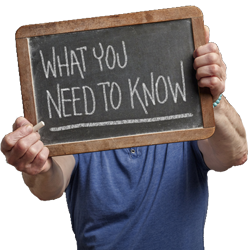“Back-to-class shopping is one of the most important consumer shopping occasions of the year," says Matthew Shay, President and CEO of the National Retail Federation (NRF). "Our research for 2023 shows American consumers are eager to jumpstart their back-to-school and college purchases early."
Based on per capita spending estimates from the NRF, Boston area parents are expected to spend a record $664,652,072 to prepare more than 677,200 children returning to grades K-12. These expenditures will exceed 2022 back-to-school sales by 12.5%
Expenditures to equip K-12 students in the Boston area will be on:
- Clothing: $234.4 million
- Shoes: $192.2 million
- Supplies: $124.9 million
- Electronics: $104.1 million
In addition to expenditures for K-12, $ 1.5 billion is expected to be spent in the Boston area to prepare college students for their return to campus. This is 27% more than was spent last year. Another record.
The biggest spending categories to equip Boston area college students in 2023 will include:
- Electronics: $371.6 million
- Dorm/Apartment Furniture: $209.8 million
- Clothing: $200.2 million
- Food Items: $166.5 million
In order to capture the largest portion of this record back-to-class cash, Boston small business owners will need to fight to keep these dollars local. According to the NRF, a painful majority of shoppers plan to buy online and in department stores. While only 13-15% of consumers plan to buy locally.
Read More
Topics
best way to advertise,
reach,
advertising reach,
roi,
consumer spending,
reach & frequency,
back-to-school,
education,
retail spending,
ad spending,
advertising roi
Local businesses have been marketing their goods and services on Boston radio since December 1921. That's when WBZ became the area's first radio station broadcasting live from the Easter States Exposition in Springfield. Who could have guessed that 102 years later, advertising on Boston radio would still be the best advertising option for all types of retailers and business owners.
Every week, according to Nielsen, Boston radio reaches 3,333,841 adult consumers. This reach is significantly higher than all other advertising options including local TV, cable, social media, streaming video, online audio, and newspapers.
Reach, according to Nielsen, is the audience metric most responsible for driving the success of an advertising campaign. Only the message itself carries more sway.
Read More
Topics
best way to advertise,
reach,
radio advertising,
advertising reach,
small business owner,
small business marketing,
small business advertising,
streaming audio,
reach & frequency,
radio listening,
share of ear,
advertising options,
audio streaming
Father's Day, this year, is June, 18. To celebrate the dads in their lives, 3.4 million Boston area consumers are expected to spend a record $451.1 million. According to a per capita forecast by the National Retail Federation (NRF), 2023 spending will be 14.5% more than last year.
“Father’s Day remains a momentous occasion for Americans to honor the important men in their lives,” NRF President and CEO Matthew Shay said. “Consumers plan to celebrate the holiday in a big way this year, and retailers are ready to help make it special.”
The record highs for both collective and average spending are primarily driven by an increase in the percentage of consumers purchasing clothing, electronics, personal care and special outings and the amount they are spending on these categories.
Overall 87% of all Father's Day spending will be concentrated into four gift categories:
- Special Outing: $153.6 million
- Clothing: $68.9 million
- Gift Cards: $55.1 million
- Electronics: $51.2 million
- Clothing: $65.0 million
The remainder of the retail dollars Boston consumers spend will be for personal care, tools/appliances, sporting goods, greeting cards, and books/CDs.
The challenge for Boston area retailers, however, is keeping a significant share of these Father's Day dollars in local cash registers and out of the coffers of online sellers and department stores. Right now, according to the NRF, those two retail channels will gobble up almost 81% of all spending.
To earn a larger share of Father's Day spending, local small business owners will need to advertise to convince Boston consumers of the benefits of buying from local retailers. By almost every marketing metric, the best way to advertise is on Boston radio.
Read More
Topics
retail,
best way to advertise,
radio advertising,
roi,
holiday shopping,
return on investment,
retail sales,
retailer,
retail store,
radio history,
holiday advertising,
retail spending,
advertising roi,
father,
father's day
There are 205,625 small businesses in the Boston-Cambridge-Newton, MA-NH Metro Area, according to the U.S. Census Bureau. Almost every one of these businesses is competing for a portion of the $103 billion of local retail spending expected to occur in 2023.*
To capture the largest share of this giant pool of consumer cash, Boston small business owners will need to consider advertising.
"Think you have a great product?" asks the U.S. Small Business Administration. "Unfortunately, no one's going to know about it unless you advertise. Advertising, if done correctly, can do wonders for your sales., and you know what that means: more revenue and more success for your company."
One of the best ways to advertise in Boston may be on local radio, a fact not lost on the world's largest advertiser, Proctor & Gamble. Last year, P&G upped spending on the radio by 43% to $235 million, according to Vivvix (formerly Kantar Media), led by a big jump in local radio.
Read More
Topics
best way to advertise,
reach,
radio advertising,
advertising reach,
how to advertise,
advertise on radio,
reach & frequency,
radio commercials,
advertise on boston radio,
who listens to radio,
AM/FM Radio
Mother's Day is On May 14th this year. According to per capita data from The National Retail Federation, 3.4 million adult consumers in the Boston area plan to celebrate the occasion.
Between now and that special Sunday in May, the NRF expects a record $703.2 million to be spent in Boston to honor all the different moms in consumers' lives. Of those celebrating Mother’s Day, most (57%) are purchasing gifts for a mother or stepmother, followed by a wife (23%) or daughter (12%).
Comparatively speaking, Boston area consumers will spend 12.6% more to celebrate Monther's Day this year than they did in 2022, which was also a record year.
“Mother’s Day provides Americans with an opportunity to honor important women in their lives,” NRF President and CEO Matthew Shay said. “As people make plans to celebrate this year, retailers are prepared to help shoppers find gifts of appreciation and admiration for those they want to recognize on this special day.”
Almost half of all Mother's Day spending in the Boston area will fall into three categories:
- Jewelry: $17,287,880
- Special Outing: $12,411,812
- Electronics: $8,865,580
The other half of Mother's Day spending includes purchases of gift cards, clothing, flowers, personal services, housewares, books, and greeting cards.
The challenge for Boston area retailers, however, is keeping a significant share of these Mother's Day dollars in local cash registers and out of the coffers of online sellers and department stores. Right now, according to the NRF, those two retail channels will gobble up almost 68% of all spending.
To earn a larger share of Mother's Day spending, local small business owners will need to advertise to convince Boston consumers of the benefits of buying from local companies. By almost every marketing metric, the best way to advertise is on Boston radio.
Read More
Topics
retail,
best way to advertise,
advertising reach,
roi,
holiday shopping,
mothers,
return on investment,
mother's day,
retail sales,
retailer,
retail store,
holiday advertising,
retail spending,
advertising roi
According to Nielsen, 3,333,841 adults tune in to their favorite Boston radio stations every week. This is significantly more consumers than are reached by all other advertising-supported media, including local TV, local cable, streaming video, social media, online audion, and local newspapers.
Boston radio's unchallenged reach is why many local business owners depend on the medium to capture the largest possible share of the $101 billion dollars consumers are expected to spend at retail this year.
Other local small business owners, however, may be surprised to learn that by most marketing metrics, radio remains the best way to advertise in Boston.
Here are four more facts about AM/FM radio that may surprise many local marketers.
Read More
Topics
best way to advertise,
radio advertising,
television advertising,
how to advertise,
streaming audio,
television,
in-car audio,
local television,
AM/FM Radio,
audio streaming
Despite high-interest rates, inflation, and recession fears, Boston area consumers are expected to spend between $101.1 and $103.0 billion dollars at retail in 2023, according to recent per capita forecasts based on a survey by the National Retail Federation. This will be a 4-6% increase over 2022.
“In just the last three years, the retail industry has experienced growth that would normally take almost a decade by pre-pandemic standards,” NRF President and CEO Matthew Shay said. “While we expect growth to moderate in the year ahead, it will remain positive as retail sales stabilize to more historical levels."
The challenge for Boston area retailers, however, is keeping a significant share of these dollars in local cash registers. According to the NRF, the amount of money spent online and non-store options will increase by 10-12%. This is nearly twice the growth rate of all 2023 retail dollars and translates to more than a $10,1 billion dollar outflow.
To keep the expected deluge of new retail dollars local, area small business owners will need to advertise to convince Boston consumers of all the benefits of buying from local companies. By almost every marketing metric, the best way to advertise is on Boston radio.
Read More
Topics
retail,
best way to advertise,
reach,
advertising reach,
roi,
return on investment,
reach & frequency,
retail sales,
retailer,
retail store,
retail spending,
advertising roi
More than 3.2 million Boston area consumers are expected to celebrate Easter in 2023, according to per capita forecasts from The National Retail Federation. In all, the NRF predicts $473 million will be spent this year.
Not only will spending on Easter in Boston top last year's take by 16%, but it will also blow past the spending record of $427 million set in 2021.
“Easter endures as an important holiday for many Americans, signifying new beginnings and a time of celebration with friends and family,” NRF President and CEO Matthew Shay said. “As consumers plan to mark the occasion through a variety of traditions, retailers are dedicated to making this year a memorable holiday.”
According to the NRF forecasts, here's how Boston consumers are expected to spend their Easter Holiday cash:
- Food: $144 million
- Clothing: $78.7 million
- Candy: $74.9 million
- Gifts: $65.0 million
- Flowers: $35.5 million
- Decorations: $34.4 million
- Greeting Cards: $19.7 million
- Other: $17.7 million
There is one obstacle, however, between small business owners and this gargantuan pool of Easter cash.
According to the NRF, the vast majority of Easter shopping will be spent at discount stores, box stores, and online. Only 22% of spending will occur at local small businesses.
To Keep more of this cash in the Boston area, retailers will need to advertise to convince consumers of the values and benefits of buying from local small business owners. According to most marketing metrics, the best way to advertise in Boston is on local radio.
Read More
Topics
retail,
best way to advertise,
small business owner,
small business marketing,
holiday shopping,
small business,
small business advertising,
retail sales,
retailer,
retail store,
holiday advertising,
retail spending
Every week, according to Nielsen, Boston radio reaches 3,333,841 adults. This is more consumers than use any other medium, including local TV, local cable, streaming video, social media, online audio, and newspapers.
Reach, though, is only one component used to calculate ratings. The other metric that contributes to the rating formula is the time spent using each medium. So, although for the past 10 years, AM/FM radio's reach has been significantly higher than the reach of local TV, consumers spent considerably more time watching TV. As a result of the math, TV has enjoyed higher ratings than radio.
For the first time, however, AM/FM radio ratings have exceeded local TV ratings by three percent among the key advertising demographic of 18-49-year-olds, according to Nielsen's Total Audience Data for the third quarter of 2023.
In the Boston area, there are 2,139,512 18-49-year-olds, the majority of whom are millennials, a generation that now accounts for nearly one-third of all retail spending.
Read More
Topics
best way to advertise,
radio advertising,
millennials,
television advertising,
television,
PAY-TV,
DirecTV,
Cable TV,
advertise on boston radio,
local television,
Streaming TV,
AM/FM Radio
Boston radio reaches more local consumers each week than any other advertising medium.
According to Nielsen, 3,333,841 adults tune in to their favorite AM/FM stations every week. This is significantly more consumers than are reached by Boston TV, cable, streaming video, streaming audio, social media, or newspapers.
AM/FM radio's dominance among local consumers is driven, in large part, by the 3.3 million Boston area adults who take to the road in their car or truck every week, according to Neilsen.
Read More
Topics
best way to advertise,
reach,
advertising reach,
in-car audio,
share of ear,
streaming media,
car radio,
AM/FM Radio,
audio streaming












